| کد مقاله | کد نشریه | سال انتشار | مقاله انگلیسی | نسخه تمام متن |
|---|---|---|---|---|
| 4270468 | 1610885 | 2013 | 11 صفحه PDF | دانلود رایگان |

IntroductionNumerous functional magnetic resonance imaging (fMRI) studies demonstrated the key brain areas associated with visual sexual arousal. However, the changes in brain metabolites involved in sexual stimuli have not been reported.AimThis study utilized functional MR spectroscopy (fMRS) to evaluate the changes in brain metabolites associated with sexual arousal induced by stimulation with erotic video clips in healthy women.MethodsTwenty‐three healthy, right‐handed women (38.4 ± 10.0 years) participated in 1H‐fMRS and fMRI studies. T1 and T2 MR images were used for voxel localization of the anterior cingulate gyrus, which is one of the most important key centers associated with sexual arousal.Main Outcome MeasuresThe changes of brain metabolites were measured using 1H‐fMRS during time‐course activation: “before,” “during,” and “after” visual sexual stimulation. The time‐course variation of the brain metabolites was analyzed by the repeated‐measures analysis of variance.ResultsThe CVmean of all the metabolites had <30% (range, 9–29%). The ICCs of α‐glutamine‐glutamate (Glx), choline (Cho), β·γ‐Glx, N‐acetylaspartate (NAA) and lactate (Lac) all exceeded 0.6. However, myo‐inositol (mI) and lipid (Lip) were <0.6. The concentration of brain metabolites including α‐Glx, β·γ‐Glx, Cho, and Lac comparatively increased significantly during visual sexual stimulation.Conclusions1H‐fMRS, for the first time, was applied to assess the brain metabolic changes during visually‐evoked sexual arousal. The fMRS outcomes in relation to functional MRI data will be useful to understand the neural mechanism associated with sexual arousal.
Journal: The Journal of Sexual Medicine - Volume 10, Issue 4, April 2013, Pages 1001–1011